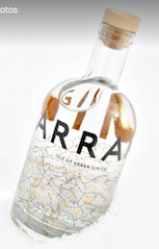
Where is it from?
Isle of Arran
What's in it?
Juniper, sea lettuce, hogweed seed and meadowsweet.
What's the damage?
£38.00 for 70cl
Is it Strong?
42% ABV
What makes it interesting?
Isle of Arran Gin is made from locally sourced and sustainable botanicals from the island. The key local botanicals include sea lettuce, hogweed seed and meadowsweet, giving the gin a floral and herbaceous profile. Created by two local Arran business, The Bay Kitchen & Stores and Blackwater Bakehouse, the four men behind the gin don’t have their own gin distillery on Arran just yet, but that’s their vision. In the meantime, their obsession is to bring to market a bold and distinctive gin, loaded with Arran botanicals.
The gin is distilled under contract in Glenshee, Perthshire, Scotland.
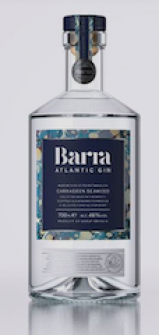
Where is it from?
Isle of Barra, Outer Hebrides
What's in it?
Juniper, carrageen, citrus
What's the damage?
£37.00 for 70cl
Is it Strong?
46% ABV
What makes it interesting?
Crafted by Isle of Barra Distillers, this gin contains 17 botanicals in total, with a key focus on carrageen, a type of red algae that grows on the shores of the Atlantic ocean. Packed with nutrients and antioxidants, carrageen is harvested from the coast of Barra after the spring tides, when the water is furthest from the shore. The resulting flavour of the juniper, citrus and carrageen is intended to roll across the tongue like the mighty Atlantic surf breaking on Barra shores. For the first 18-24 months Barra Gin will be distilled in England while plans for a distillery on the island are progressed.
Distilled under contract in London, England.
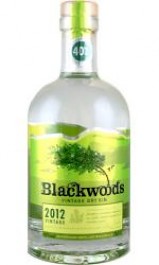
Where is it from?
Shetland
What's in it?
Juniper, coriander, wild water mint, sea pink flowers, violet flowers and turmeric.
What's the damage?
£28 for 70cl
Is it Strong?
40% ABV
What makes it interesting?
The story goes that Blackwood’s Gin is made using home-grown resources from Shetland. There’s one snag: as small islands are vulnerable to changes in vegetation they can’t guarantee a consistent taste year-on-year, so each year is a ‘vintage gin’. The people behind the gin say that local crofters harvest the botanicals each summer - they are laid out on perforated trays while the gin is triple distilled through vapour infusion in a small copper still. As Shetland sits on the 60 degree north line of latitude, the team were inspired to produce Blackwood's 60 - a 60% ABV gin. Each vintage is produced in very limited quantities - a total of 22,000, the same as the population of Shetland. The team claims the flavour is determined by the availability of the hand-picked botanicals.
Gins in the Blackwood's family:
Blackwood's
Blackwood's 60
Distilled under contract in London, England.
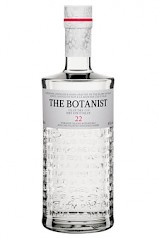
Where is it from?
Islay
What's in it?
Juniper, apple mint birch leaves, bog myrtle leaves, chamomile, thistle flowers elderflowers, gorse flowers, heather, hawthorn flowers and mugwort leaves.
What's the damage?
£33 for 70cl
Is it Strong?
46% ABV
What makes it interesting?
With an eye-opening 31 botanicals, the flavour is complex. 21 out of the 31 botanicals grow on Islay, including the juniper. It is distilled in a low pressure Lomond pot still as Bruichladdich Distillery claims this process helps to release the aromatics from the botanicals.
Distilled on Islay, Scotland.
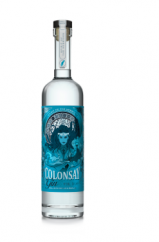
Where is it from?
Isle of Colonsay
What's in it?
Juniper and secret botanicals
What's the damage?
£39.00 for 70cl
Is it Strong?
47% ABV
What makes it interesting?
Colonsay Gin takes its inspiration from a mixture of Celtic folklore and the natural Hebridean beauty of the island. It is hand-made in small batches of 160 bottles to a closely guarded secret. In the style of a classic London Dry, this Royal Strength juniper-led gin balances spice, peppery notes and lemon sherbet.
Gins in the Colonsay family include:
Colonsay Gin
Colonsay Bramble Gin
Colonsay Sloe Gin
Distilled under contract in Methven, Perthshire, Scotland.
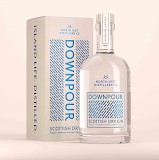
Where is it from?
North Uist, Outer Hebrides
What's in it?
Citrus, spice and wild Hebridean heather
What's the damage?
£38.00 for 70cl
Is it Strong?
46% ABV
What makes it interesting?
The North Uist Distillery team uses a high volume of wild botanicals to give big, bold flavours. The spirit is clear in the bottle then turns cloudy in the glass when tonic and ice are added. This louching effect is a visible haze caused by the botanicals’ essential oils being released in a fragrant flavour cloud.
Distilled on North Uist.
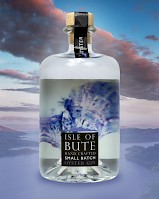
Where is it from?
Isle of Bute, Scotland
What's in it?
Juniper, Loch Fyne oyster, cucumber, seaweed, lemon, coriander and angelia.
What's the damage?
£38 for 70cl
Is it Strong?
48% ABV
What makes it interesting?
Head Distiller, Simon Tardivel, has worked all over the world as an award-winning brewer and alcohol expert. After falling in love with the Isle of Bute, he was inspired to create unique craft gins that showcase the true spirit of Scotland with locally sourced botanicals - including Loch Fyne oysters used in producing what he claims is the world’s first Oyster Gin. With plans to have a distillery on the island by 2020, Simon and the team have teamed up with Merchant City Brewing Company in Glasgow in the interim, using botanicals from the Bute area.
Gins in the Isle of Bute family:
Isle of Bute Oyster Gin
Isle of Bute Gorse Gin
Distilled under contract in Glasgow, Scotland.
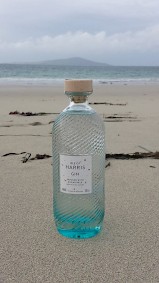
Where is it from?
Isle of Harris
What's in it?
Juniper, coriander, angelica root, orris root, cubebs, bitter orange peel, liquorice, cassia bark and sugar kelp.
What's the damage?
£35 for 70cl
Is it Strong?
45% ABV
What makes it interesting?
The nine specially chosen botanicals seek to capture the elemental nature of the island, particularly the maritime influences of the seas which surround on all sides. Sugar kelp is key to the subtle coastal notes that mark out the spirit. Hand-harvested by a local diver from the deep underwater forests of the Outer Hebrides, this natural and sustainable ingredient completes the wider aspects of the gin's flavour profile.
Distilled on the Isle of Harris, Scotland.

Where is it from?
Kirkwall, Orkney
What's in it?
Juniper, angelica, ramanas rose, burnet rose, borage, bere barley and calamondin citrus fruits
What's the damage?
£40 for 70cl
Is it Strong?
43% ABV
What makes it interesting?
Kirkjuvagr means “Church Bay” in Old Norse – more commonly known as Kirkwall. Centuries ago, Norsemen brough angelia to the islands – a traditional gin botanical. This botanical, found growing wild in Orkney to this day, is one of the defining ingredients. Plans are afoot for 2018 with an artisan distillery in Kirkwall, visitor centre and shop. Their ‘storm strength’ Arkh-Angell Gin is designed to be more intense as a testament to seafarers. It has been created with a mission to retain the smoothness and characteristics of the original Kirkjuvagr Gin, but with a higher strength to pay homage to the proud seafaring heritage of Orkney. It carries the name of a local fishing boat that has a place close to the heart of many Orcadians.
Gins in the Kirkjuvagr family:
Kirkjuvagr Gin
Kirkjuvagr Arkh-Angell Gin
Kirkjuvagr Harpa Gin
Distilled in Methven, Perthshire, Scotland.
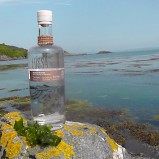
Where is it from?
Ardlussa, Isle of Jura
What's in it?
Juniper, rosehip, water mint, sea lettuce, rose petals and lemon thyme.
What's the damage?
£39.00 for 70cl
Is it Strong?
42% ABV
What makes it interesting?
Lussa Gin is an expression of the landscape on the Isle of Jura. For the all-female ‘women in gin’ team this means growing, gathering and distilling local botanicals. The result is a full-bodied floral gin with a hint of vegetation, reflecting the rich conditions of the island.
Distilled on Jura, Scotland.
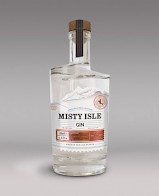
Where is it from?
Portree, Isle of Skye
What's in it?
Juniper, coriander, angelica and lemon.
What's the damage?
£34.00 for 70cl
Is it Strong?
41.5% ABV
What makes it interesting?
The team behind this gin believe that provenance is everything – that abiding sense of belonging and community. Misty Isle Gin is a marriage of crystal clear spring waters from the Storr Lochs and the right balance of botanicals, including hand-foraged juniper from various wild locations around Skye. Their second gin, Tommy's Gin, was brought out to give thanks for the work of the military with a percentage of profits going to charities representing the armed forces in Scotland.
Gins in the Misty Isle family:
Misty Isle Gin
Tommy's Gin
Misty Isle Mulled Christmas Gin
Distilled on the Isle of Skye, Scotland.
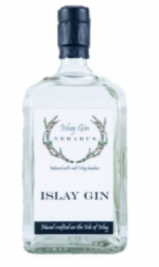
Where is it from?
Isle of Islay
What's in it?
Juniper, herbs, spices, wild Islay heather.
What's the damage?
£37 for 70cl
Is it Strong?
42% ABV
What makes it interesting?
Nerabus is a hamlet by the shores of Loch Indaal on the Scottish Hebridean Isle of Islay and is known for its wild heather and deer. Created by the husband and wife team behind Islay Gin Ltd, it is It is produced with 100 % Isle of Islay water and bottled on the island. The heather is hand-picked in the months of August and September and is then dried and stored ready for infusion in the spirit.
Distilled under contract. It is not know where.

Where is it from?
Orkney
What's in it?
Variety of local botanicals
What's the damage?
£30 for 50cl
Is it Strong?
41.3% ABV
What makes it interesting?
What started out as a hobby, making hand-crafted gin as a Christmas present for family and friends, is now a family-run business. The inspiration is the rugged coast and wind-swept hills of Orkney, so local botanicals form the flavour base of the gin. The gin is made with a bathtub-style method: this involves blending a variety of botanicals with a specially made neutral grain spirit. The team produces three seasonal gins, each of which are filtered, bottled and labelled by hand. Johnsmas is the Orcadian midsummer so the gin is fresh and light with floral notes; Mikkelmas is the feast of St Michael, celebrated during the first half of October to mark the end of the harvest, so the gin is warming and spicy and works well as a hot toddy; and the latter is a Rhubarb Old Tom, flavoured with chopped Scottish rhubarb.
Gins in the Orkney Gin Company family:
Orkney Johnsmas Gin
Orkney Mikkelmas Gin
Orkney Rhubarb Old Tom Gin
Distilled on Orkney.
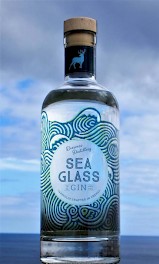
Where is it from?
Orkney
What's in it?
Juniper, lavender, lemon verbena, orange, mint.
What's the damage?
£34.00 for 70cl
Is it Strong?
43% ABV
What makes it interesting?
Deerness Distillery is said to be the first new commercial distillery on Scotland’s Orkney islands in over 130 years; it is situated in the parish of Deerness in Orkney’s east mainland. The spirit is made in a traditional alembic copper pot still with an additional reflux column to refine the process, then the liquid is cut with pure Orcadian water before each bottle is hand-filled, corked, sealed and signed. In addition to gin, the Australian husband and wife team plan to introduce vodka, rum and a coffee liqueur. An on-site shop and viewing area are scheduled to open in 2018.
Distilled on Orkney, Scotland.
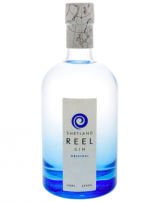
Where is it from?
Shetland
What's in it?
Juniper, coriander, orris root, cassia bark, citrus peel and apple mint.
What's the damage?
£29.99 for 70cl
Is it Strong?
43% ABV
What makes it interesting?
A truly authentic Shetland gin from Shetland's only distillery. Created in Unst, the most northerly island in the UK, this traditional-style gin has a unique Shetland twist with the inclusion of apple mint - grown and harvested on Unst by Unst Market Garden. The special edition Simmer Gin is inspired by the magical Shetland 'simmer dim' or summer twilight when the sun barely falls below the horizon, seeming like an endless day. The Up Helly Aa unusual limited edition gin was designed with Shetland's world-famous Viking fire festival in mind - light straw in colour, it has been aged in ex-whisky casks. The Ocean Sent gin is reminiscent of the surrounding seascape. The limited edition Holly Days gin was produced for Christmas 2016; the team took Shetland Reel signature gin and gave it a festive twist with more juniper, more spice and more citrus. Everything to excess, just like the festive season!
Gins in the Shetland Reel family:
Shetland Reel Gin
Shetland Reel Ocean Sent Gin
Shetland Reel Simmer Gin
Shetland Reel Up Helly Aa
Shetland Reel Holly Days Gin
Distilled on Shetland, Scotland.
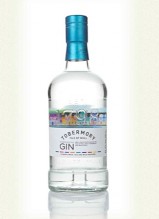
Where is it from?
Tobermory, Isle of Mull
What's in it?
Juniper, elderflower, tea, heather
What's the damage?
£35.00 for 70cl
Is it Strong?
43.3% ABV
What makes it interesting?
A small-batch-distilled gin from the Isle of Mull-based distillery Tobermory, which is better known for creating Scotch whisky. It features local botanicals including elderflower, hand-grown tea and wild heather, plus a dash of Tobermory new-make spirit, which is used more as another botanical rather than the full base. Initially made in a 60-litre still named Wee Betty, Tobermory Gin has a larger dedicated gin still in a stillhouse separate from the existing whisky-producing space.
Distilled on the Isle of Mull.

Where is it from?
Isle of Tiree
What's in it?
Juniper, kelp, eyebright, ladies’ bedstraw, water mint and angelica.
What's the damage?
£35.00 for 70cl
Is it Strong?
40% ABV
What makes it interesting?
Tyree Gin is the second product released by Tiree Whisky Company Ltd. The predominant flavour is achieved through six locally foraged botanicals, collected from the island’s rich and fertile machair ground. This is blended together with kelp and sea-belt from the wild Atlantic Ocean to create ‘the true taste of Tiree’. The name of the gin is not a spelling mistake; Tyree was the original spelling for Tiree’s Post Office, established in Scarinish in 1802. The name was later changed to Tiree.
Distilled under contract in London, England.
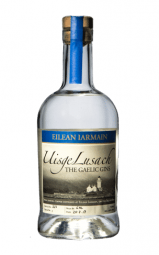
Where is it from?
Isle of Skye
What's in it?
Juniper, lemon and cardamom.
What's the damage?
£40 for 70cl
Is it Strong?
40% ABV
What makes it interesting?
Uisge Lusach Gin reflects and reinforces the rich Gaelic heritage of the Isle of Skye. Because it is distilled using the island’s soft water, taking the ‘Uisge’ from Usige Beatha (Scotland's water of life - whisky) seemed very appropriate. Lusach means herbaceous or abounding in herbs which reflects several of the botanicals. The distillery overlooks the historic lighthouse at Eilean Iarmain on the south east coast of the Isle of Skye.
Gins in the Uisge Lusach family:
Uisge Lusach Dry Gin
Christmas Spirit Gaelic Gin Liqueur
Apple & Rosehip Gaelic Gin Liqueur
Bramble Gaelic Gin Liqueur
Distilled on Skye.
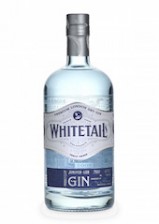
Where is it from?
Isle of Mull
What's in it?
Juniper, coriander, lemon peel, heather, pine needles and sea kelp
What's the damage?
£38.00 for 70cl
Is it Strong?
47% ABV
What makes it interesting?
The inspiration behind the family-owned brand was the majestic White-tailed sea eagle, Europe’s largest bird of prey and synonymous with the Isle of Mull because of its nesting beside the Tiroran Estate. They team uses botanicals that are native to Mull - heather and pine needles from their family estate and sea-kelp collected from the shores of Loch Scridain.
Distilled under contract in London, England.
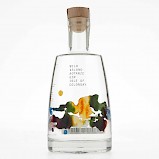
Where is it from?
Isle of Colonsay
What's in it?
Juniper berries, coriander seeds, sweet Mediterranean lemon peel, orange peel, liquorice, cinnamon bark, angelica root, orris root, cassia bark, nutmeg, lemon balm, wild water mint, meadowsweet, sea buckthorn, heather flowers and bog myrtle.
What's the damage?
£40.00 per 70cl
Is it Strong?
43.7% ABV
What makes it interesting?
Created by the team at Colonsay Brewery, and working with Langley Distillery, this small batch gin takes its design inspiration from the colours and contours of the island’s beautiful Kiloran Bay, and takes its flavour inspiration from the island flora and wild botanicals. They have also produced a Wild Island Sacred Tree Gin, inspired by the ancient Scots who observed a ‘sacred tree’ calendar where the bramble vine represented the month of September – this was when the fruits were gathered. Inspired that this folklore, the gin uses an array of carefully selected autumn fruits, including brambles hand gathered on Colonsay. Added to a composition totalling 22 individual botanicals, this creates a complex fruity-spicy-sweet contemporary London Dry style gin.
Gins in the Wild Island family:
Wild Island Botanic Gin
Wild Island Sacred Tree Gin
Distilled under contract in Birmingham, England.
To access Gin Club Scotland you must be of legal drinking age in your country of residence.